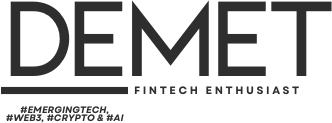Software Architecture and Functioning of Smart Contracts
In blockchain and IoT integration, smart contracts play a decisive role.
These software are coded in a Turing-complete language and run automatically if a certain condition is met.
Here is a simple smart contract example:
solidity
// A simple smart contract example: Transfers an amount of cryptocurrency
pragma solidity ^0.8.0;
contract SimpleSmartContract {
address public owner;
constructor() {
owner = msg.sender;
}
function transfer(address payable _recipient, uint256 _amount) external payable {
require(msg.sender == owner, "Only the owner can transfer funds");
require(address(this).balance >= _amount, "Insufficient balance");
_recipient.transfer(_amount);
}
}Data Security and Cryptographic Algorithms
Security of data from IoT devices is a key focus of the integration.
End-to-end encryption and cryptographic protocols are used to ensure data security.
Here is a simple example of encrypting data with the AES encryption algorithm:
python
from Crypto.Cipher import AES
from Crypto.Random import get_random_bytes
# Creating key
key = get_random_bytes(16)
# Encrypting data
def encrypt_data(data):
cipher = AES.new(key, AES.MODE_EAX)
ciphertext, tag = cipher.encrypt_and_digest(data.encode())
return ciphertext, cipher.nonce, tag
# Decrypt encrypted data
def decrypt_data(ciphertext, nonce, tag):
cipher = AES.new(key, AES.MODE_EAX, nonce=nonce)
plaintext = cipher.decrypt_and_verify(ciphertext, tag)
return plaintext.decode()Distributed Data Storage and Approval Mechanisms
Blockchain functions as a distributed database and ensures secure storage of data from IoT devices.
Here is an example of a simple blockchain smart contract:
solidity
// A simple blockchain smart contract example: Data storage
pragma solidity ^0.8.0;
contract DataStorage {
mapping(uint256 => string) public data;
function storeData(uint256 _id, string memory _data) public {
data[_id] = _data;
}
function retrieveData(uint256 _id) public view returns (string memory) {
return data[_id];
}
}Application Layer and Protocols
In IoT and blockchain integration, the software architecture is often supported by the application layer and protocols.
python
import paho.mqtt.client as mqtt
# Connecting to MQTT Broker and broadcast subscription operations
def on_connect(client, userdata, flags, rc):
print("Connected with result code "+str(rc))
client.subscribe("iot/sensors")
def on_message(client, userdata, msg):
print(msg.topic+" "+str(msg.payload))
client = mqtt.Client()
client.on_connect = on_connect
client.on_message = on_message
client.connect("mqtt.eclipse.org", 1883, 60)
client.loop_forever()Scalability and Performance Optimization
A key challenge of IoT and blockchain integration is scalability and performance optimization.
javascript
// Using an asynchronous function to optimize the response time of operations
async function fetchData() {
const response = await fetch('https://api.example.com/data');
const data = await response.json();
return data;
}In this article, we have seen the software aspects of IoT and blockchain integration and the technical benefits this integration provides.
Using these technologies together enables the development of safer, more efficient and innovative solutions across industries.
In this article, IoT and blockchain integration is examined in depth with sample code snippets for software details.

Leave a Reply